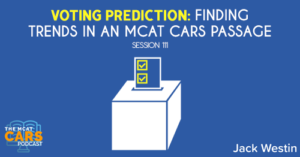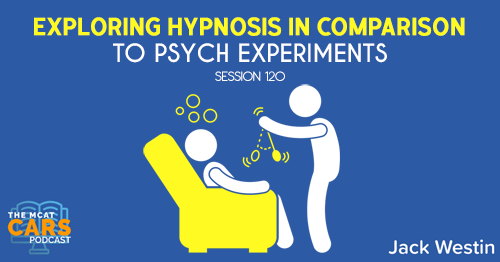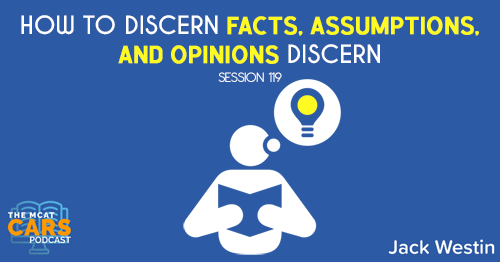Apple Podcasts | Google Podcasts
Session 111
Today, we look at trends in the author’s voice and context specifics. Join us as we dive into this passage on elections and voting outcome predictions.
As always, I’m joined by Jack Westin from JackWestin.com. Check out all their amazing free resources including a free trial session of Jack’s full course to see how it’s like learning from Jack Westin himself. They have recently reduced the prices of all their courses to make them more affordable to you. So be sure to check them out!
Listen to this podcast episode with the player above, or keep reading for the highlights and takeaway points.
Link to the article:
https://reallifemag.com/what-the-chart-wants/
To the individual voter, an election looks like coloring in bubbles with a black magic marker. For the municipalities tasked with summing all those ballots together, an election looks like a list of names, each paired with the number of votes it has garnered. An election, for a county, looks like amalgamating those lists into one that can be passed along to state officials, who log them all together into a grayscale spreadsheet. Only once things go national does the sense of an election as a picture really sharpen. Our woebegone states, all 50 of them, rendered brilliantly in red and blue.
The single day over which this process has traditionally transpired is far from enough for election obsessives less concerned with casting their personal votes than in prognosticating everybody else’s. Luckily for that set, this is a golden age of prolonging the magic. Each new election model follows a line of sophisticated forecasts that have propagated over the last dozen years, and each provides a distinct opportunity to experience elections on a daily basis. Users, it is presumed, can’t get enough of immersing themselves in the aesthetics of prediction and uncertainty: concepts illustrated, of course, in those same contrasting colors that signal history in the making.
Though Nate Silver’s FiveThirtyEight — named for the total number of U.S. electors who actually determine the winner of the presidency every four years — publishes the most well-known of these forecasts, his is far from the only one. In recent elections, the New York Times, Huffington Post, and Daily Kos all hosted their own models, while this year, outlets across the pond have joined in the fun, with both the Economist and the New Statesman rolling out sparkling new forecasts. The election modeling field has grown so exponentially since 2002 — when Real Clear Politics began aggregating polls ahead of that year’s midterms — that it’s now possible to average the models themselves into a “consensus” forecast like the one featured on 270toWin.com.
But modeling is just one constituent part of data-driven election aesthetics. The Times’ once reviled election-night needle has become a staple of its coverage, and nearly every news site now reports out election returns at the county level. Just last week, the Cook Political Report debuted the “Swingometer,” a tool that allows users to see how fine-tuning the percentage of voters in each demographic group supporting either Trump or Biden might change the final tally. Nudge the turnout numbers of “white, non-college graduate” up, or “Hispanic/Latino” down, and be amazed as the electoral map gradually tints warm or cool.
[03:38] Paragraph 1, Sentence 1
To the individual voter, an election looks like coloring in bubbles with a black magic marker.
Jack says:
Most people who have voted understanding how they’re coloring in those bubbles.
[04:00] Paragraph 1, Sentence 2
For the municipalities tasked with summing all those ballots together, an election looks like a list of names, each paired with the number of votes it has garnered.
Jack says:
The author is painting a picture from both sides. One is the individual voter and then the other is the agency tasked with counting those votes.
[04:27] Paragraph 1, Sentence 3
An election, for a county, looks like amalgamating those lists into one that can be passed along to state officials, who log them all together into a grayscale spreadsheet.
Jack says:
So it’s going farther away from the markers. And they’re going more into this trend of voting this way or that way. They don’t really care about the specifics anymore. It’s becoming more generalized.
[05:02] Paragraph 1, Sentence 4
Only once things go national does the sense of an election as a picture really sharpen.
Jack says:
It’s starting from an individual voter to, now, on a national level.
[05:13] Paragraph 1, Sentence 5
Our woebegone states, all 50 of them, rendered brilliantly in red and blue.
Jack says:
We don’t know what “woebegone” is. But the first three letters make sense. It refers to the struggles the states have gone through. Now, we don’t know if that’s a negative connotation, or just a good description of the effort and the hard work that it takes to vote for someone to tally up the votes. But it might give us a clue as to where the author goes with this. So it’s something to keep in mind.
[06:17] Paragraph 2, Sentence 1
The single day over which this process has traditionally transpired is far from enough for election obsessives less concerned with casting their personal votes than in prognosticating everybody else’s.
Jack says:
You’re not worried about the actual votes. You’re more worried about predicting the votes.
[07:04] Paragraph 2, Sentence 2
Luckily for that set, this is a golden age of prolonging the magic.
Jack says:
Prolonging the magic probably means the guesswork. Being able to elect someone is probably a magical thing on it in its own right. So we have to keep going. But they’re definitely talking more about the prediction side now.
[07:53] Paragraph 2, Sentence 3
Each new election model follows a line of sophisticated forecasts that have propagated over the last dozen years, and each provides a distinct opportunity to experience elections on a daily basis.
Jack says:
The author’s basically saying we’re more concerned about the prediction than the actual voting process or our personal vote. So it’s suggesting that we actually experience the voting every day leading up to the actual voting by predicting it.
[08:53] Paragraph 2, Sentence 4
Users, it is presumed, can’t get enough of immersing themselves in the aesthetics of prediction and uncertainty: concepts illustrated, of course, in those same contrasting colors that signal history in the making.
Jack says:
It’s just saying the same thing. If this is hard to understand, just go with what you already know. But let’s try to break it down.
Users can’t get enough of predicting the aesthetics of prediction and uncertainty. It sounds like the facade, the look, maybe the bar graphs, or the colors. It’s referring to the prediction models.
The rest of it is basically saying these colors you see when you’re making these predictions are very similar to the style and colors you’re going to see on an actual election day. So it’s as if you’re prolonging this election by discussing it and predicting it every day.
[10:39] Paragraph 3, Sentence 1
Though Nate Silver’s FiveThirtyEight — named for the total number of U.S. electors who actually determine the winner of the presidency every four years — publishes the most well-known of these forecasts, his is far from the only one.
Jack says:
Now we’re given a specific example of one of the forecasts or models.
[11:14] Paragraph 3, Sentence 2
In recent elections, the New York Times, Huffington Post, and Daily Kos all hosted their own models, while this year, outlets across the pond have joined in the fun, with both the Economist and the New Statesman rolling out sparkling new forecasts.
Jack says:
Some more examples of everyone chipping in for people to have fun and entertainment. We don’t know how representative this is of the actual election day. But at least have fun with it.
[11:49] Paragraph 3, Sentence 3
The election modeling field has grown so exponentially since 2002 — when Real Clear Politics began aggregating polls ahead of that year’s midterms — that it’s now possible to average the models themselves into a “consensus” forecast like the one featured on 270toWin.com.
Jack says:
The author is giving a history of this modeling and how it has exponentially grown since 2002, where it started, and what we can do with all this information. The point is you can combine them and you have this consensus. It’s showing us trends.
The beginning paragraph started with voting and how the voting process transitions from the actual vote to the city level, to the state level, and to the national level. And now we’re kind of doing the same thing here. It’s saying we have one or two pollsters and forecasters. And now, we have combined multiples. So it’s just trying to show us these trends, and you have to follow along as we go.
[13:06] Paragraph 4, Sentence 1
But modeling is just one constituent part of data-driven election aesthetics.
Jack says:
It is definitely going in a new direction.
[13:22] Paragraph 4, Sentence 2
The Times’ once reviled election-night needle has become a staple of its coverage, and nearly every news site now reports out election returns at the county level.
Jack says:
People didn’t like it when it first came out. But now everyone has something to show election night returns.
Reviled is something that we don’t like. And the author did point this out in the beginning. Now, it’s pretty clear that they’re not just doing it, they’re doing it at the county level, which is really specific.
[14:13] Paragraph 4, Sentence 3
Just last week, the Cook Political Report debuted the “Swingometer,” a tool that allows users to see how fine-tuning the percentage of voters in each demographic group supporting either Trump or Biden might change the final tally.
Jack says:
Again, just an example of how we’ve gone from “we don’t like this” to “we have cool new tools that basically let us do anything we want. And that explains their interest in this stuff.
[15:16] Paragraph 4, Sentence 4
Nudge the turnout numbers of “white, non-college graduate” up, or “Hispanic/Latino” down, and be amazed as the electoral map gradually tints warm or cool.
Jack says:
It’s just an example of the types of things that you can dial in with this new tool from Cook Political Report.
[15:43] Main Idea
We are obsessed with trying to predict who’s gonna win our elections. And we have all these new tools and forecasts and models to play with. It has become more accessorized over time. And forecasting is something they care about a lot when it probably isn’t as significant as it should really be.
Links:
Link to the article:
SEARCH SITE
SEARCH SITE
LISTEN FOR FREE












